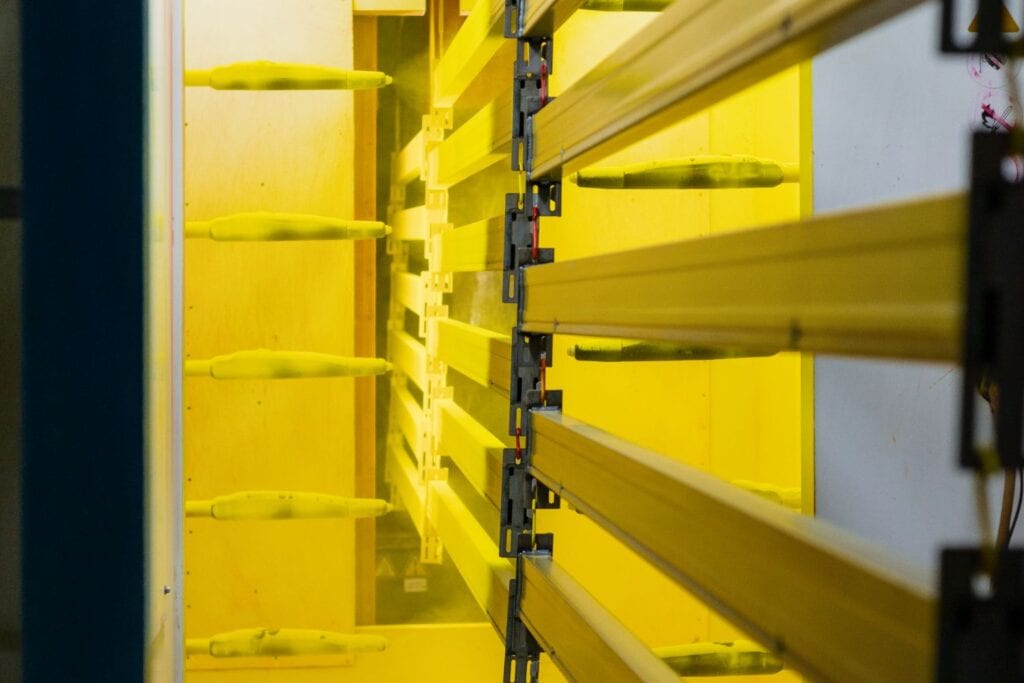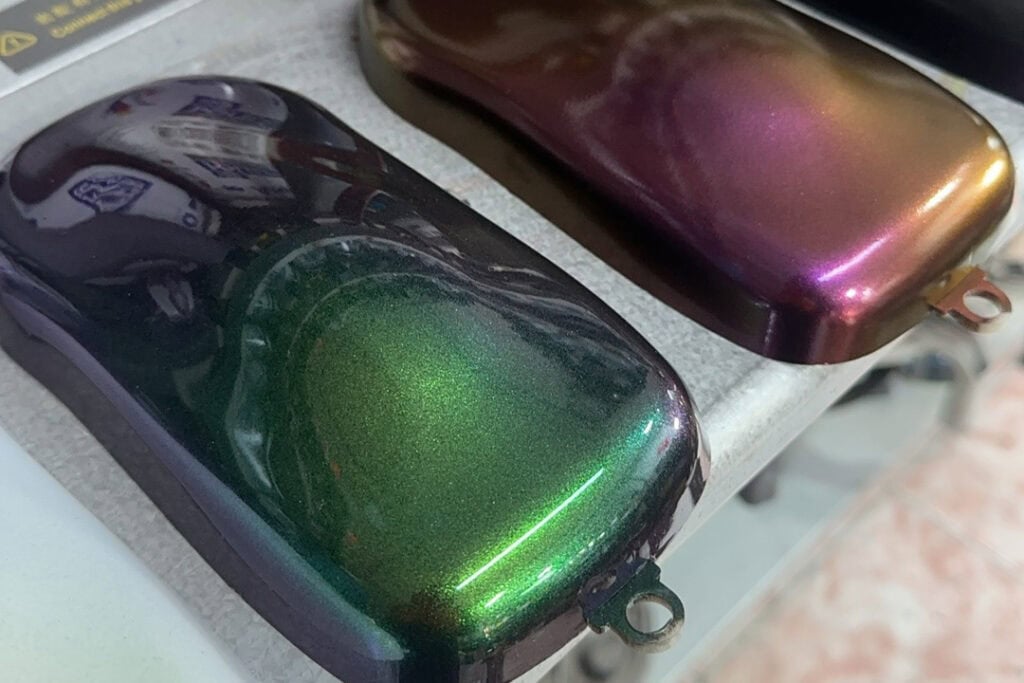When it comes to paint manufacturing, the right pigment can make or break the product. Whether you’re aiming for a simple color or a stunning, eye-catching effect, choosing the correct pigment is essential. That’s where effect pigments come into play. These special pigments reflect light in unique ways to create dazzling, dynamic finishes that paint manufacturers around the world rely on to differentiate their products.
What Are Pigments?
At its core, a pigment is a material that changes the color of reflected or transmitted light due to selective absorption. There are many types of pigments used in paint manufacturing, and each has a specific role in determining the final look and feel of the paint.
Let’s look at the three main categories:
1. Absorption Pigments (One-dimensional)
Absorption pigments are the most common and basic type of pigment used in paints. These pigments work by absorbing certain wavelengths of light and reflecting others, which gives the paint its observable color. They are responsible for producing solid, consistent colors, and they don’t reflect light in a special way.
Key Uses: Solid color coatings, general-purpose paints, and coatings where a flat, single-toned color is desired.

2. Metallic Pigments (Two-dimensional)
Metallic pigments are a form of effect pigment that use small, flat pieces of metal to reflect light. These pigments create a shiny, lustrous finish that gives surfaces a metallic appearance. The reflective metal flakes are usually made from materials like aluminum, copper, or zinc. Because of their unique ability to reflect light, metallic pigments are used in applications where the paint needs to have a reflective, glossy appearance.
Key Uses: Automotive finishes, architectural coatings, anti-corrosion coatings, and reflective surfaces.
3. Interference Pigments (Three-dimensional)
Interference pigments, another type of effect pigment, are far more complex in how they reflect light. These pigments are made up of multiple layers that interfere with light, creating a spectrum of changing colors. As light hits these layers, it’s reflected at different angles, causing the color to shift depending on the angle of view. These pigments are used when a dynamic, multi-colored effect is desired.
Key Uses: Pearlescent finishes, color-shifting coatings, and high-end decorative paints.
What Are Effect Pigments?
Effect pigments are special types of pigments designed to produce unique visual effects that standard absorption pigments cannot. They either reflect light in distinctive ways, producing metallic luster, pearlescence, or even color shifts based on light and viewing angles.
Let’s break down some of the most popular types of effect pigments and how they’re used in the paint industry:
1. Metallic Flake Pigments
Metallic flake pigments are designed to produce a lustrous, shiny appearance in paints. These pigments contain leafing or non-leafing flakes that float to the surface of the paint, giving it a reflective finish. Leafing pigments create a smooth metallic surface, while non-leafing pigments align parallel to the surface for maximum reflection.
Materials Used: Aluminum, zinc, and copper-zinc alloys.
Applications: Automotive finishes, anti-corrosion coatings, and architectural paints where a reflective or metallic look is required.

2. Pearlescent Pigments
Pearlescent pigments are interference pigments that reflect light through multiple layers to create a shimmering or pearlescent effect. These pigments can create a satin or pearl-like luster, often used in high-end products. The pigments are made by coating metal oxides onto mica or synthetic substrates, producing a variety of color effects.
Materials Used: Natural substrates like mica and synthetic substrates like borosilicate or silica.
Applications: Automotive coatings, consumer electronics, and decorative finishes that require a luxurious, shimmering look.
Discover Our Pearlescent Pigment Series




3. Special Effect Pigments
Special effect pigments are a category of pigments designed to produce unique effects, such as fluorescence, phosphorescence, or thermochromism. These pigments react to heat or light, creating color shifts, glow-in-the-dark effects, or changing colors when exposed to different temperatures.
Applications: Signage, document security, novelty items, and high-tech coatings that require dynamic visual effects.
Daylight Fluorecent Pigment
These pigments produce vibrant, neon-like colors under normal daylight, giving a high-visibility, fluorescent effect.
Applications: Commonly used in safety signs, high-visibility paint, and promotional materials where brightness and attention-grabbing colors are essential.

UV Reactive Powder
UV reactive powders change color or become visible only under UV (blacklight) exposure, adding an invisible effect in normal lighting that “comes to life” under UV light.
Applications: Frequently used in anti-counterfeiting printing, event décor, and special coatings for artwork, offering a hidden effect that glows under UV light.

Photoluminescent Pigments
These pigments absorb light and then emit it over time, creating a glow-in-the-dark effect that lasts even after the light source is removed.
Applications: Ideal for emergency signs, pathway markings, and novelty items that require long-lasting afterglow in dark settings.

Thermochromic Pigments
Thermochromic pigments change color based on temperature, with color shifts occurring at specific temperature ranges.
Applications: Used in mood rings, temperature-sensitive labels, and novelty mugs, providing an interactive color-changing effect.

Photochromic Pigments
These pigments shift in color or become visible when exposed to sunlight or UV light, reverting to their original state when the light source is removed.
Applications: Commonly seen in sunglasses, UV-detecting products, and specialized inks, making them perfect for products that respond to outdoor lighting.

How Do Effect Pigments Work?
Effect pigments work by manipulating light. Unlike absorption pigments that simply reflect specific wavelengths to produce a consistent color, effect pigments interact with light to create special finishes like metallic, pearlescent, or iridescent effects.
Choosing the Right Effect Pigment for Your Product
When selecting the right effect pigment for your paint products, it’s important to consider the desired visual effect, application method, and end-use environment. For reflective finishes, metallic pigments are your best bet, while interference pigments are ideal for color-shifting or pearlescent effects. Additionally, consider factors like durability, UV resistance, and compatibility with the base material to ensure long-lasting performance.
Innovations in Effect Pigments and Future Trends
The world of effect pigments is constantly evolving, with new innovations pushing the boundaries of what’s possible. Some of the emerging trends in effect pigments include:
- Smart pigments: These pigments can change color in response to environmental factors like temperature or light exposure.
- Eco-friendly pigments: Manufacturers are developing more sustainable effect pigments that reduce environmental impact.
- Nanopigments: Advancements in nanotechnology are allowing for the creation of effect pigments with even more precise control over light reflection and color change.
Case Studies: Success Stories Using Effect Pigments
To illustrate the transformative power of effect pigments, let’s look at a few case studies:
- Automotive Industry: A leading car manufacturer used metallic and pearlescent pigments to create a luxurious, shimmering finish on their latest line of vehicles, leading to a 20% increase in sales in the luxury market segment.
- Architectural Design: An award-winning architectural firm integrated interference pigments into the exterior coating of a high-profile building, creating a dynamic color-changing effect that attracted widespread attention and media coverage.
Conclusion
Effect pigments are a powerful tool for paint manufacturers looking to create visually stunning and unique products. Whether you’re looking to produce a high-gloss metallic finish or a dynamic color-shifting effect, the right effect pigments can elevate your products to new heights. By understanding how these pigments work and how to use them effectively, you’ll be able to stay ahead of the competition and deliver innovative, high-quality products that stand out in the market.









